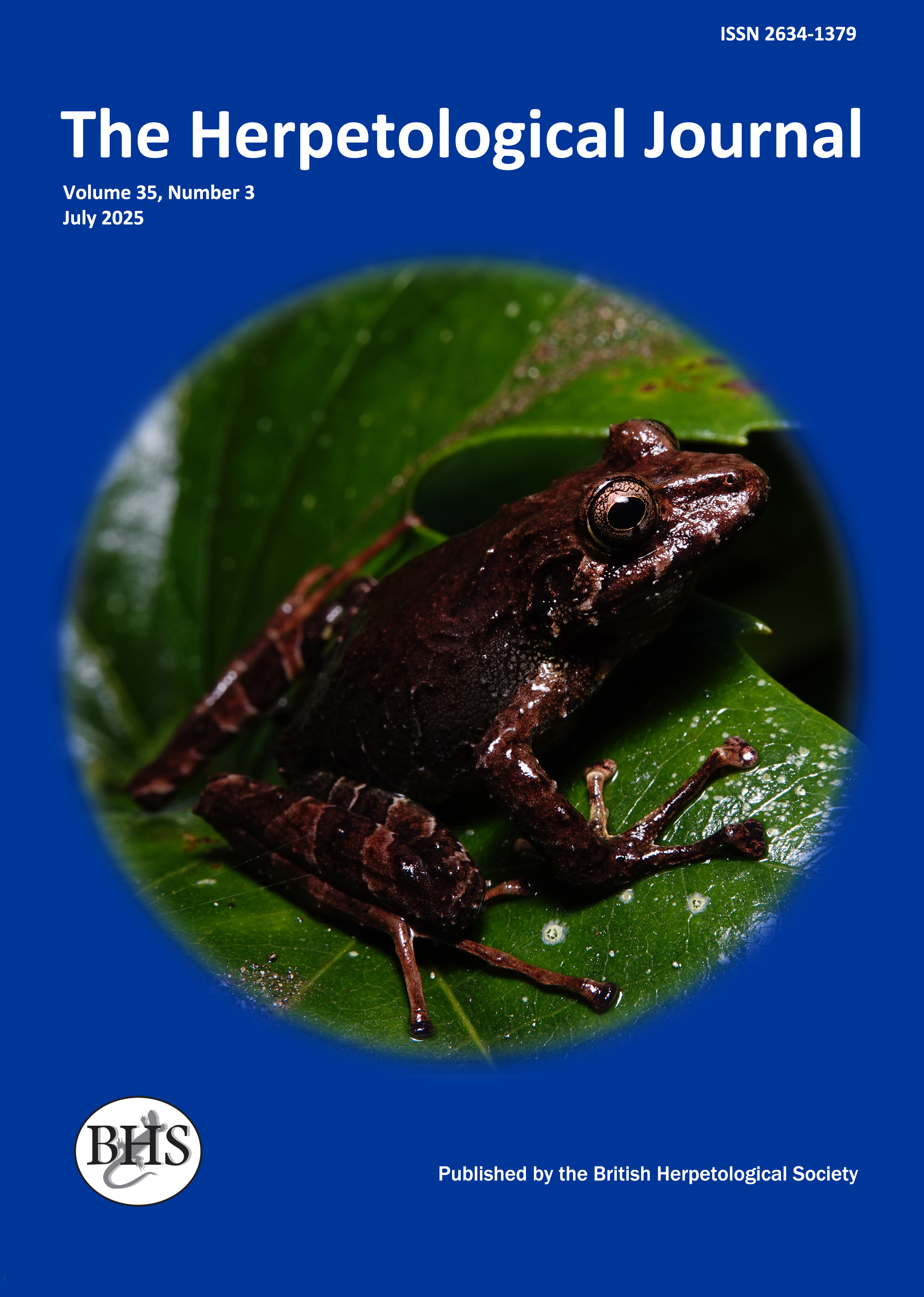
The Herpetological Journal
The Herpetological Journal is the Society's prestigious quarterly scientific journal. Articles are listed in Biological Abstracts, Current Awareness in Biological Sciences,Current Contents, Science Citation Index, and Zoological Record.
ISSN 0268-0130
2021 Impact Factor from Clarivate for the Herpetological Journal is 1.194, an increase of 0.332 from 2020.
pdf 11. Historical and ecological biogeography of the genus Crotalus in Mexico
1115 downloads
Open Access
pp. 99-108
Authors: Uriel Hernández-Salinas, Aurelio Ramírez-Bautista, Gustavo Montiel-Canales & Raciel Cruz-Elizalde
Abstract: The genus Crotalus is well represented in all biogeographic provinces including most major vegetation communities and climatic zones described for Mexico. For this reason, we use the assumptions of panbiogeography with the objective to establish a biogeographic framework for the 26 species of rattlesnakes native to Mexico. On the basis of 1472 records, 26 individual tracks derived from the distribution of each species resulted in two generalised tracks. The first is located in the Peninsula of Baja California, in the biogeographic provinces of California and Baja California, and is identified by three species (C. enyo, C. mitchellii and C. ruber). The second generalised track is located on the eastern portion of the Transmexican Volcanic Belt, the Balsas Basin, and Sierra Madre del Sur, supported by C. ravus and C. intermedius. An analysis of partition of variance found that vegetation explains the most variation in the distribution of species. Very similar results were obtained by analysis of ancestral reconstruction for biogeographic provinces, vegetation types and elevation. Our results are consistent with different climatic events during the Pleistocene, and tectonic events such as the lifting of the Sierra Madre Occidental and Sierra Madre Oriental. In addition, our results showed similarities with historical distributions of birds, mammals and beetles. Further studies of the distribution and phylogeography of other groups of reptiles with significant information gaps in their historical and current distribution are needed to shed further light on the biogeography and diversity of reptiles of Mexico.
Key words: biogeographic provinces, distribution, ecology, panbiogeography, Rattlesnakes

